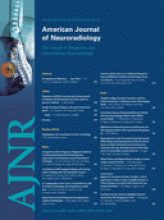We agree with Drs. Bergson, Garg, and Chang that septo-optic dysplasia is a syndrome with a spectrum of abnormalities, both clinically and on MR imaging. The classical clinical triad includes optic nerve hypoplasia, pituitary dysfunction, and agenesis of the septum pellucidum.1 In our article,2 we presented 4 children who had hormonal disturbances but no other features of septo-optic dysplasia, apart from a HESX1 mutation in 1 patient. All 4 had an ectopic posterior pituitary lobe, and the periventricular heterotopia was an incidental finding. We postulated that an underlying genetic abnormality, rather than unknown previous trauma, was the most likely explanation for both abnormalities because periventricular heterotopia is known to have a genetic basis in some instances.3 Furthermore, patients with classical septo-optic dysplasia have been observed with ectopic posterior pituitary lobe and periventricular heterotopia.1
In our article, we wished to emphasize the association between the migrational abnormality and ectopic posterior pituitary lobe and the likely genetic basis for both lesions, so patients with classical septo-optic dysplasia were not included. In the setting of classical septo-optic dysplasia, we have observed a patient with a bifrontal malformation of cortical development (Fig 1), periventricular heterotopia, and ectopic posterior pituitary lobe, very similar to the reported case of Bergson, Garg, and Chang. These cases suggest that septo-optic dysplasia encompasses a heterogeneous spectrum of malformations in which specific genetic abnormalities may lead to distinct malformation patterns.4
Axial T1-weighted inversion recovery (TR/TE/TI, 2448/9/750) image of a 6-year-old boy with septo-optic dysplasia shows right periventricular heterotopia (small arrow) and a bifrontal cortical malformation (arrowheads), very similar to the appearances shown by Bergson, Garg, and Chang. Septal agenesis and ectopic posterior pituitary lobe were also present (not shown).
- Copyright © American Society of Neuroradiology













